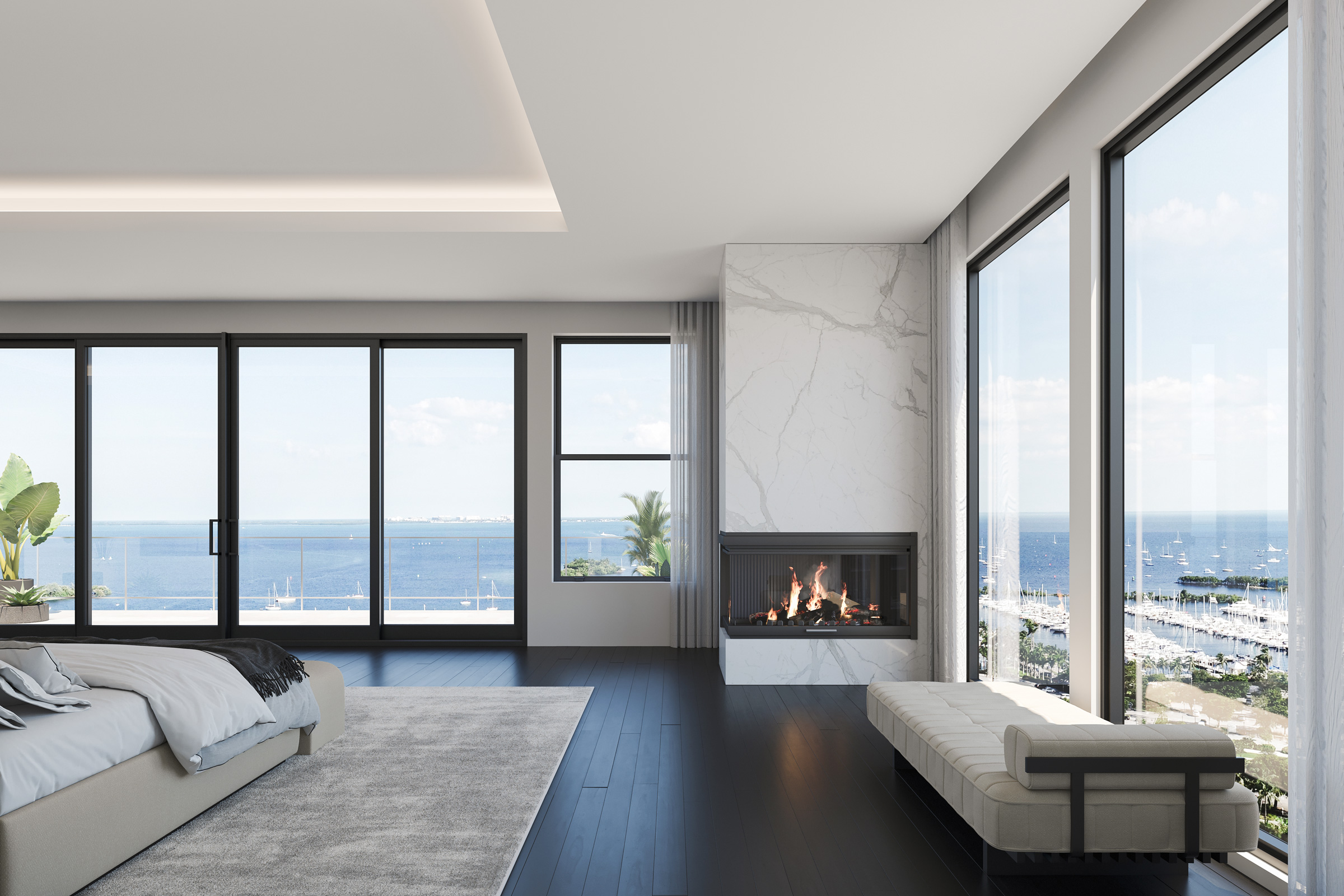Story at a glance:
- Nearly one-third of a building’s lost energy is through its windows.
- Low-E coatings on insulated glass can reduce a window’s energy loss by up to 50%.
- Quad-pane windows and other new technologies under development can increase energy efficiencies even more.
The largest share of residential energy use—averaging 51%—is for home heating and cooling. For commercial buildings recent figures place it at 41%. To reduce energy loss, costs, and associated carbon emissions, you might consider insulating the glass elements of a building to conserve even more energy.
There’s good reason to do so in light of some recent statistics.
The US Department of Energy states that roughly 30% of energy used for heating all buildings is lost through windows, costing $42 billion every year. That’s the equivalent of 13% of the building sector’s carbon emissions.
Fortunately, insulated glass will better regulate indoor temperature, reducing both energy costs, loss, and carbon emissions. Since windows are the principal glass elements of any building, knowing which type of insulated window will best meet your needs requires some research. Let’s consider the major options on the market today.
How does insulated glass work?
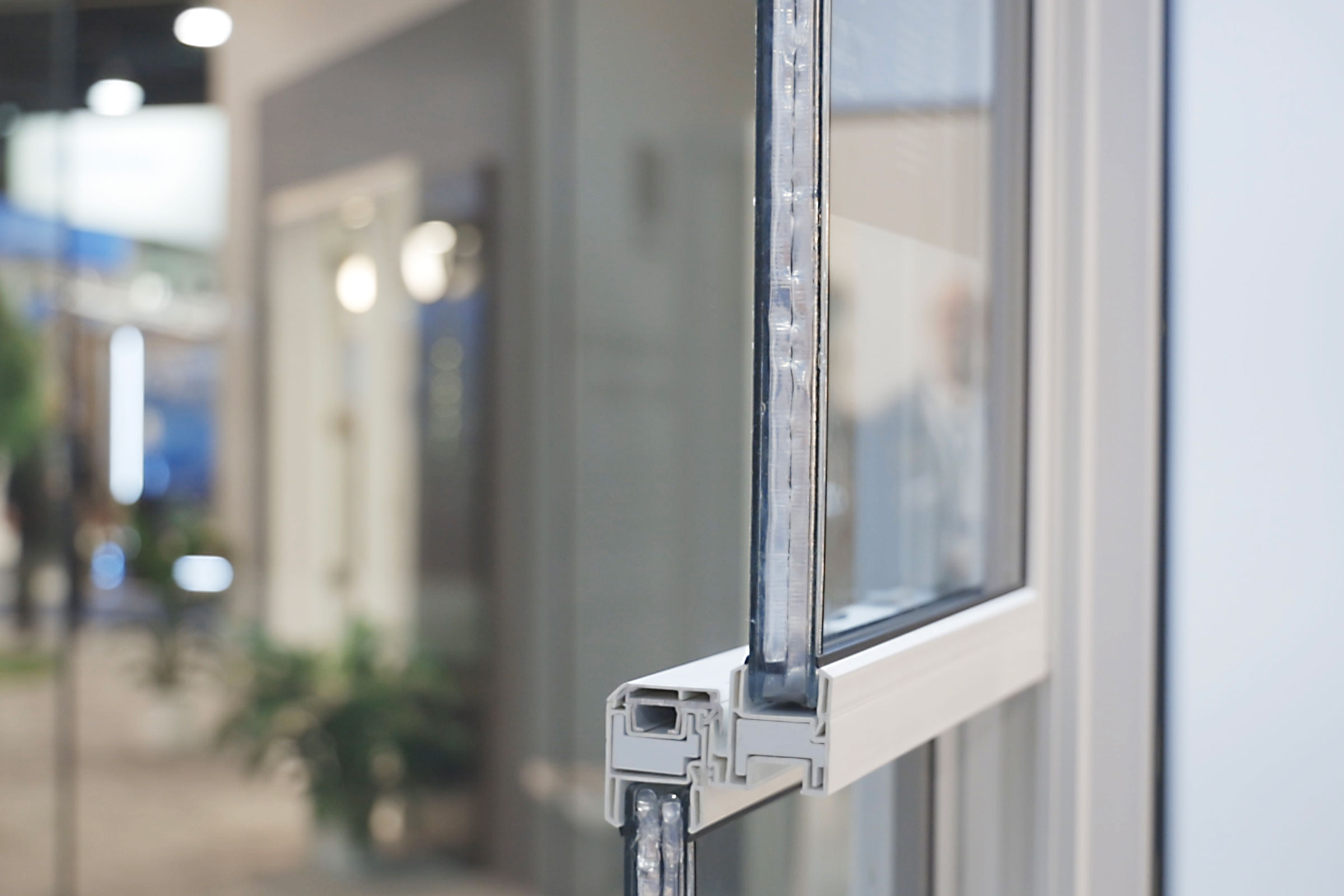
Thin triple insulated glass unit. Photo courtesy of PGT Innovations
Double-, triple-, or quadruple-pane insulated glass units (IGUs) as windows, walls, doors, or skylights act like thermal curtains that keep hot air out of a building in the summer but retain it indoors in the winter. Essentially insulated glass prevents thermal transfer into or out of buildings.
PGT Innovations and Corning Incorporated collaborate to create a better window, and the result is nothing less than revolutionary. The Thin Triple IGU—an easy “drop-in” upgrade for window manufacturers that’s the first product of its kind in the US—requires far less in the way of supporting materials and labor.
For a typical-sized vinyl window in the home, the Thin Triple IGU will take the center of glass U-factor down by at least 20%, from 0.25 to less than 0.2, according to Bob Keller, the Florida-based company’s senior vice president of product innovation and technology. Additionally, the Inflation Reduction Act provides tax credits for products that meet the most efficient energy standards. The soon-to-be Energy Star 7.0-rated Thin Triple IGU—which will be available soon and well-suited to North and North Central Energy Star zones, plus Canada and California—will do just that, saving both energy and money as a result.
In between the panes in an IGU is most commonly argon or krypton gas. Heavier than air, these inert gases help prevent hot air from passing through them.
However, these windows, especially if poorly made or installed, can leak up to 1% of gas per year. The window’s exposure to the sun and the building’s altitude also influence the amount of leakage. Although the loss won’t substantially impact their effectiveness as a thermal barrier for a couple of decades at least after installment, it still represents a loss of energy and money.
Separating the glass panes and maintaining a uniform distance between them—usually by just a fraction of an inch—at the window’s bottom is a metal or plastic spacer. The spacer contains a desiccant, like silica or zeolites, to absorb any moisture that may be present or may seep.
An airtight sealant guards the entire system in place and keeps argon from diffusing out of it. Usually polysulphide is used to seal all around the edges of an IGU.
What are the types of insulated glass?
Three broad categories of glass—annealed, tempered, and laminated—can each be in double-, triple-, or quadruple-paned windows, walls, doors, or skylights. Additionally, all three categories may undergo a special treatment that affects their ability to be thermal barriers (see next section).
Insulated annealed glass is commonly used in standard windows. Insulated tempered or laminated glass is often selected for large windows, walls, doors, and skylights for safety reasons. Tempered and laminated won’t shatter into sharp-edged pieces like annealed glass will.
How does an E-coating work on insulated glass?

More than 400 low-e laminated, insulated, digitally printed pieces of glass combine in this 13,000-square-foot design that pays homage to historic murals at Harlem Hospital Center. Photo courtesy of GGI
Glass may be coated with a thin, microscopic, but barely noticeable layer of a metal or metal oxides (usually silver or tin) known as a low emissivity (E) coating that blocks the passage of ultraviolet (UV) and infrared (IR) wavelengths of light but allows visible light to pass through. The low-E coating is highly reflective, meaning incoming UV and IR bounces off of the glass, heading right back to the atmosphere while visible light enters a building. This is a good thing because UV light fades colors on furniture and curtains and IR light carries high levels of heat.
There are two types of E-coatings that differ in how they’re made. The passive E-coating works best in colder climates because it allows in more radiant energy than the other type called a solar control E-coating. Possessing a lower emissivity, the solar control coating performs best in hotter regions.
It is the E-coating that’s really serving as the thermal barrier in insulated glass, keeping hot air out in the summer and warm air inside during the winter. In fact low-E coatings can reduce energy loss through windows by 30 to 50%.
What is the R-value of insulated glass?
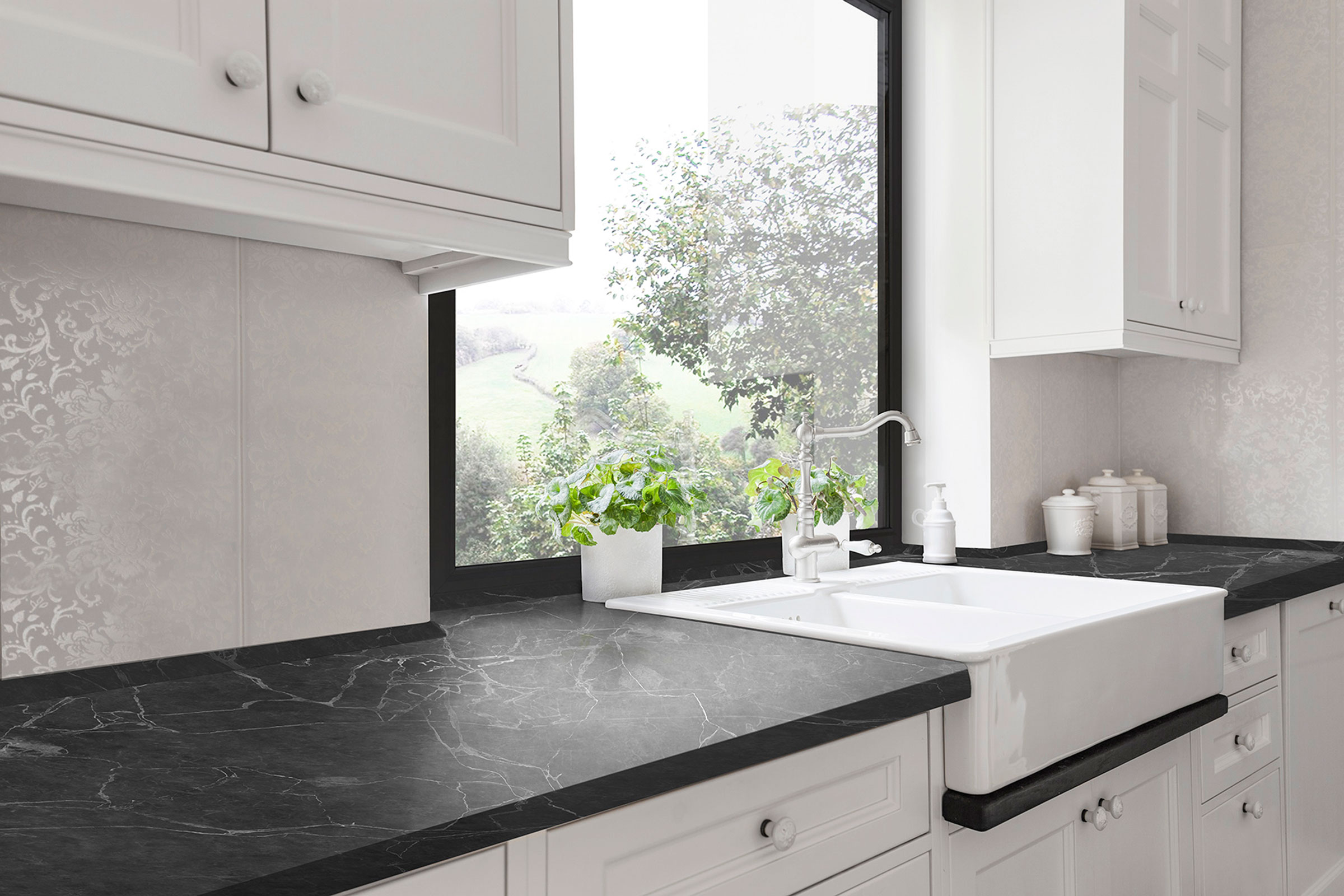
Black Thin Triple Insulated Glass Unit. Photo courtesy of PGT Innovations
The R-value of insulated glass is a measure of the thermal resistance of the glass. In other words, it measures how well glass can stop heat flow. R-value stands for resistance value.
The higher the R value, the more energy-efficient the glass. Double- and triple-paned windows typically have an R-value of 2 to 5. Quadruple-paned windows have an R-value of 8 to 15. For comparison, the U.S. Department of Energy recommends the minimal attic insulation be at R-12.
Interestingly, argon increases a window’s R-value by only half a point. This is why it’s the low-E coating that is doing the real insulating work in glass.
How is quad-pane glass made?
Currently there are two configurations of quad-pane glass. One type borrows the thin glass technology used in the latest laptops and smartphones. Both styles resemble a standard double-pane window in thickness and weight.
The first kind consists of two layers of insulating film resting between two panes of glass. The second model replaces the film with two panes of ultra-thin glass set between two glass panes.
Quad-pane windows used 24% less energy for heating and cooling than a high-performing double-pane window. They increase the cost by roughly 50% compared to double-pane windows. For new builds and window replacements, the ROI quad-pane windows is one to six years, depending on climate factors and power utility rates.
Latest Technologies in Insulated Glass
Although not yet rolled out to the market, there are several new technologies in the R&D stages to make insulated glass even more energy efficient, thereby cutting carbon emissions, too.
Dynamic glazing. Electrochromic, thermochromic, and photochromic technologies are examples of dynamic glazing techniques. These three technologies cause glass surfaces to transition from clear to dark according to outdoor temperature and solar radiation either on their own, by a switch signal, or via a central automation system. These technologies can lower cooling costs by up to 20%.
Aerogel technologies. Aerogel materials have exceptional insulating characteristics and transparency. Roughly 25% savings on heating and cooling results from aerogels on windows.
Vacuum insulation. Originally developed by Panasonic for use in commercial refrigeration, vacuum insulation for windows is their next promising frontier.
Benefits of Insulated Glass
Insulated glass has several benefits. Here are the major ones:
- Greater energy efficiency
- Lowered energy costs
- Reduced carbon emissions
- Increased strength
- Decreased sound infiltration
Examples of Insulated Glass in Projects

Lincoln Yards’ first major project, 1229 W Concord, is a life sciences building that overlooks the Chicago River. It was completed in 2023 and designed by Gensler. Photo by Kendall McCaugherty
Designers and builders wishing to bring the outdoors inside use glass to capture the openness and natural light.
1229 W Concord, Lincoln Yards, Chicago
The new, eight-story life sciences building at Lincoln Yards in Chicago, designed by Gensler, features bird-friendly, insulated glass.
The tower glass is glazed with a Solarban 90 low-e coating possessing a 0.23 solar heat gain coefficient. To make it more visible to birds, there is a silk screened, quarter-inch dot spaced two-by-four inches. The exterior reflectance of the unit is also only 12%. The diminished reflectance is important to birds migrating in the path of this building. “This helps limit the reflectance of the sky in the glass, which can also disorient birds,” Gensler Principal Michael Townsend told gb&d in a previous article.
West Texas Home
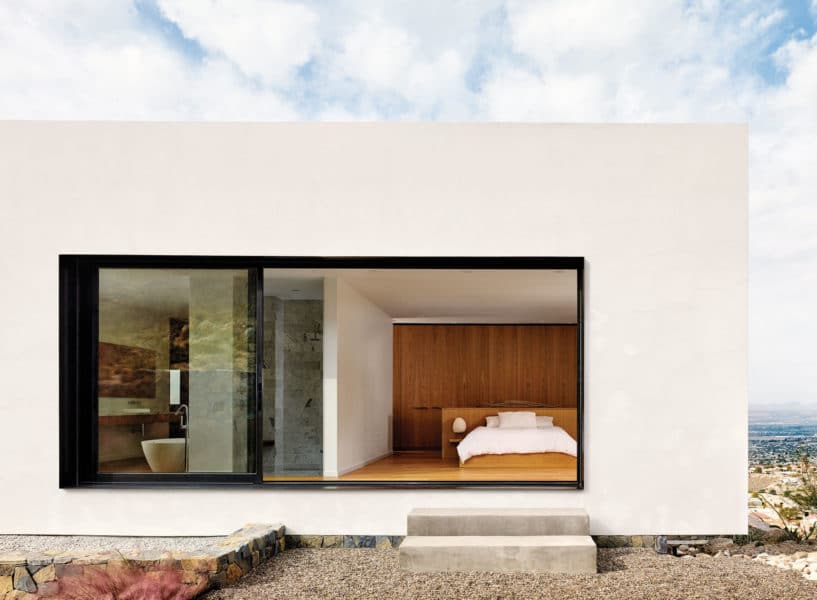
The West Texas home sits on a hill in three stacked volumes with expansive windows. Photo by Casey Dunn
Western Window Systems specializes in fabricating large expanses of glass suitable as sliding doors or walls. Their new Series 7000 possesses the insulating ability to make glass-walled homes in cold climates energy efficient. “We’ve learned that everyone wants to live this way,” Ty Cranford, architectural director for Western Window Systems, told gb&d in an earlier interview. “They want to let the outside in.”
M-22 House, Michigan
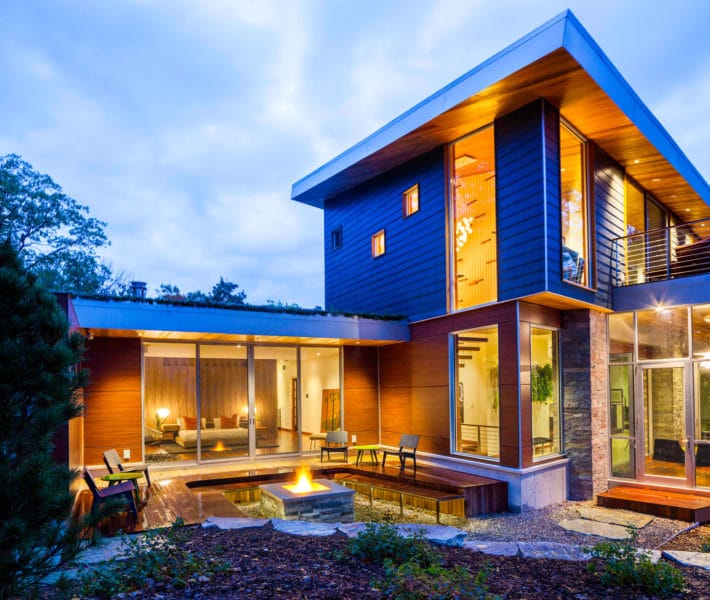
Strategically placed windows give the M-22 House plenty of light and unbeatable views. Photo by Dietrich Floeter
The design team also turned to Western Windows Systems
Michael Fitzhugh designed the house to incorporate expansive windows while still meeting energy standards, using durable weatherstripping and dual-paned, triple-coated low-E glass to help block the transfer of heat.

